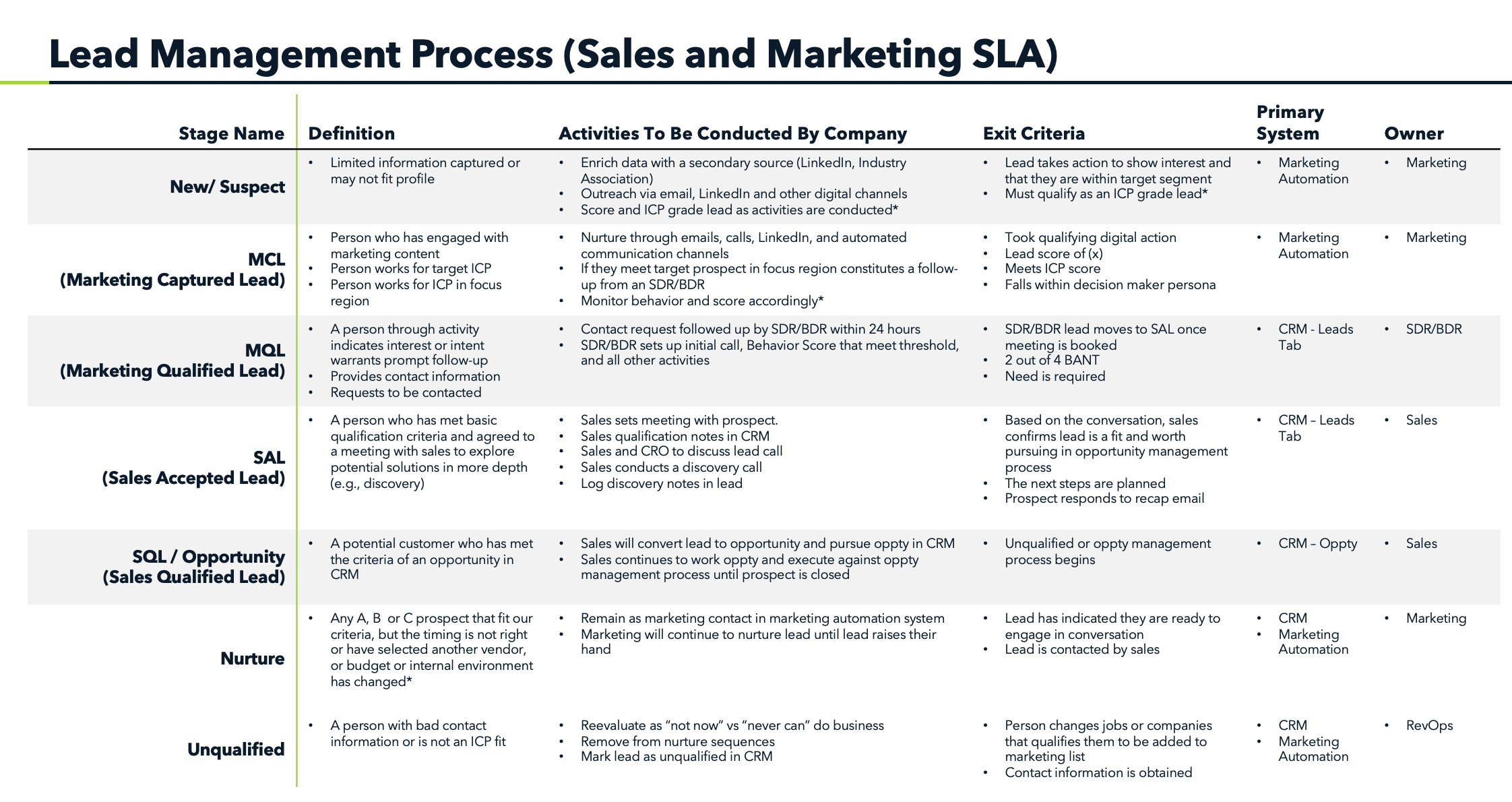Building a growth-focused marketing team is essential for driving a company’s success. Many Private Equity portfolio leaders now realize that a growth-focused marketing team is not just about marketing; it’s about achieving long-term sustainable growth by aligning marketing efforts with broader business objectives. This involves a specific focus on sales-marketing alignment and collaboration. In this blog post, I’ll explore the key strategies and steps to build a marketing team that’s primed for growth.
I’ll answer some of the key questions we get from our PE operating partners:
- Are my portcos’ marketing strategies growth-focused? Strategic marketing planning is the tell-tale sign of a growth-oriented team. The strategic marketing plan should be a guiding light to how the portco will reach growth expectations. Which areas of the marketing engine will continue, expand, stop and create net new initiatives? The plan of a growth-focused marketing team is clearly defined with objectives mapped to your growth goals. These objectives should be specific, measurable, attainable, relevant, and time-bound (SMART). For example, your objectives could be to increase revenue by 20% in the next year or expand your customer base by 15%. Strategic marketing planning must be aligned to help achieve those goals.
- Do we have the right marketers in place? As with any other part of the portco, you need the right people with the right skills. This is more difficult to achieve in marketing where it’s common to have nearly every role be unique. This is in contrast to most sales teams that typically have multiple FTEs fulfilling the same roles. The redundancy of talent to roles in sales organizations gives a valuable comparison between individuals that you don’t have in marketing. To find A-player talent, look for individuals who are experts in their respective marketing disciplines (e.g., content marketing, SEO, social media, PPC, etc.) and who operate with a growth mindset. They should be adaptable, data-driven, and willing to experiment.
- Are marketing and sales working together? A growth-focused marketing team works closely with other departments across the organization. This should be accomplished with an emphasis on sales and marketing collaboration. Sales, marketing, product development, and customer support must operate as a team. I always advise portco leaders to foster cross-functional collaboration to ensure that marketing efforts align with the overall business strategy. Regular meetings and open communication channels are key to achieving this.
Are my portco marketing strategies growth-focused?
I often find that portfolio companies lack a focused strategic marketing plan or operate from one that is pieced together. The strategies don’t have effective alignment in order to achieve company revenue goals. In other words, the operating partner can’t get clarity on how the revenue goal is achieved from the strategy.
There are four core areas to consider when evaluating the marketing strategy. These are prioritized since they are the easiest to resolve.
- Review current marketing strategies: Portco marketing leaders should be able to walk you through exactly how they plan to achieve their contribution to revenue. If they can’t, that’s a red flag. I can help you evaluate your marketing leadership to determine if they’re the right fit.
- Include marketing in annual revenue planning: Your marketing leaders need to have a seat at the table during strategic planning. This gives them visibility into revenue goals and the context of priorities. Their collaboration will help proactively determine how much revenue should be attributed to marketing. Most importantly, you’ll have their involvement and buy-in into the final number.
- Example: I once reported to a CEO who built marketing goals based solely on the previous year’s marketing revenue attribution. There was no conversation to ask marketing what they could produce. Once I was awarded a seat at the table, through the use of analytics, I was able to share a vision for how my team could generate 15% more revenue. This enabled the company to submit a higher revenue forecast and performance.
- Review and approve each year’s marketing plan: Marketing touches nearly every aspect of a business…not to mention being customer-facing. The final key to ensuring the marketing strategy is growth-focused is to present it to all key stakeholders. Your portfolio company marketing leaders should be asking for this visibility and opportunity to request feedback. This ties into the collaboration that I’ll discuss later in this post.
Do we have the right marketers in place?
Evaluate whether or not the right team of A-players is in place for strategic execution. Some of the key functions you should be looking for on your portco marketing teams are:
- Demand generation: A good demand generation expert can build campaigns and launch them across various digital platforms. A great demand generation expert understands how the brand story ties into all marketing tactics. They also master which channels to use and the timing of when to use them. They should know exactly how many qualified leads to deliver to sales to meet the revenue goal.
- Brand/content development: Brand experts are often looked at as the fluff of the marketing organization. This is the farthest thing from the truth when a strong brand generates inbound meeting requests. Look for a leader who thinks first about how the brand story needs to come to life across various marketing channels. They should seek a close partnership with the demand generation team to weave the story into all touchpoints. In partnership with the rest of marketing, create persona-based content aligning the buyer and seller. They should also be looking for and suggesting ways to measure the impact of the brand. These insights are derived through brand tracker surveys, social media sentiment and digital engagement with content.
- Sales enablement: Marketing cannot be growth-focused without this function. A good sales enablement leader should be a collaborator by nature. They are the quarterback of collaboration! They are responsible for everything sales needs to be successful. Leverage the brand and demand generation teams to capture the storytelling tools and campaigns that sales needs. This includes developing sales collateral, training, and executing the event plan. A Gartner study showed that, “more than 50% of CSOs believe that enablement will support marketing and/or customer success roles in the next three years.”
There are several additional functions that will be needed as marketing scales, but think of this as your Mr. T. Starter Kit for building a gold medal marketing team!
Are marketing and sales working together?
The best way to answer this question is to ask: Do sales and marketing have regular meetings, and if they do, what do they discuss? I sometimes get blank stares or silence with some looking away or a jumbled response when I ask if these meetings occur. Unfortunately, this misalignment or lack of collaboration isn’t uncommon, as sales-marketing alignment is frequently overlooked, even by established portcos. There is a better way.
- Establish a regular meeting cadence: The first step is for leaders to commit to a formal structure for collaboration. If it’s not on the calendar, it won’t happen. The sales and marketing leaders drive who else needs to attend these meetings, such as product, customer success, operations, etc. Be careful, however, not to make the meeting too big. Too many hands in the pot can take away from sales and marketing collaboration instead of adding to it.
- Align on an SLA between sales and marketing: Marketing is the spearhead of driving leads in most companies in this digital age. However, the sales department doesn’t always trust the leads being generated by marketing. The SLA (sometimes called the lead management process), creates sales-marketing alignment. The definition of a marketing-qualified lead (MQL) is agreed upon and documented. This is powered by the lead management process for ultimately becoming a sales-qualified lead (SQL). Both sales and marketing have responsibilities within the process as depicted in the example below
- Align sales and marketing goals: Marketing teams often don’t have any skin in the game when it comes to revenue. One of the most important items to address to ensure sales and marketing collaboration is to put marketing on the hook for sales revenue. As I mentioned in my blog post, Revenue Marketing Leads to Higher Exit Multiples. Marketing leaders must build a revenue-driven budget that is based on the quantified lead volume that sales will need to hit their closed/won targets. There’s also a nifty marketing ROI calculator I mentioned in that post that you can download for free.
In conclusion, balancing your marketing spend and team structure is an ongoing process requiring a structured approach and constant evaluation. Optimize your marketing organization for growth and create sales and marketing collaboration by:
- Understanding your customer acquisition needs
- Focusing on the right channels
- Creating a well-defined sales and marketing funnel.
The key is to strike a balance that aligns with your business goals, ensures a positive return on investment, and enables sustainable growth. Leverage the steps in this blog post to assess the marketing growth readiness of each of your portcos.
I have a passion for B2B marketing and appreciate the opportunity to discuss how this blog applies to your portco. If anything in this post sparked a thought, I’d love to spend a few minutes with you going deeper into any marketing-related topics you have.


